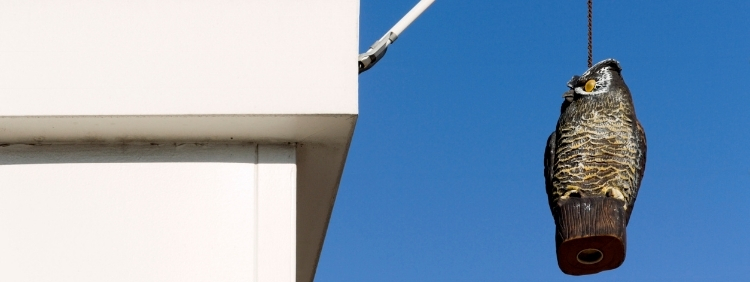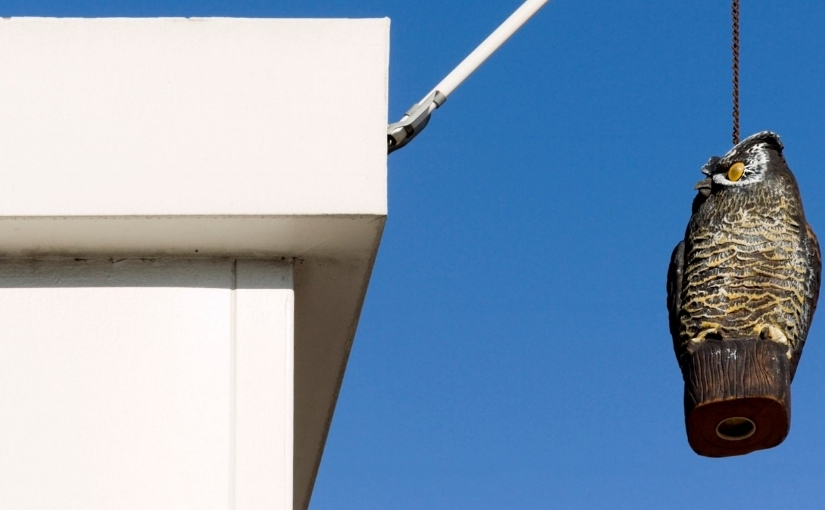
As a homeowner, you have many creative ways to prevent rodents from entering your home or building nests around your property. One common strategy is setting up a fake owl. Find out how these items work and when you should schedule a rodent inspection to keep your home comfortably free from pests.
What Are Fake Owls?
Similar to scarecrows, fake owls are designed to trick rodents and birds away. An owl is a natural predator of many of these animals, so they’re naturally hesitant to enter a home being guarded by an owl.
Owls hunt at night and prey on a wide array of animals. Here are some that may avoid owls on your property:
- Rats
- Mice
- Squirrels
- Crows
- Hawks
- Chipmunks
Some fake owls are state-of-the-art products with multiple deterrent features. Modern fake owls use a combination of hanging ornaments, ultrasonic devices and reflective tape to make irregular noise and light patterns to ward away pests. Unfortunately, these solutions may have limited success and ultrasonic devices may be uncomfortable for pets and other animals in the area.
Do Fake Owls Keep Away Rodents?
One of the most common reasons to purchase a fake owl is to scare away mice and rats. These intruders may be initially concerned about a fake owl, but the effects are limited.
First, a fake owl doesn’t move. It may have reflective eyes or other features, but it’s not as realistic as you may think. Rodents may get used to a fake owl after some time and not be frightened by it anymore.
Another limitation of a fake owl is that it’s only a prevention technique. Rodents are very resourceful and prefer to build nests in your attic, basement or other out-of-the-way areas of your home. An owl outside your home, fake or otherwise, isn’t likely to cause mice or rats to move out of your home.
Why Should You Prevent Rodents From Living in Your Home?
Mice, rats, chipmunks and squirrels can cause significant damage to your home. When these animals build nests in your home, they typically chew up important materials. They can also damage materials while attempting to enter your home. Expect insulation, drywall, roofing materials and other items to be damaged from rodents making a home on your property.
Once present, these animals cause even more damage as they give birth and search for food. Rodent feces carry diseases, like hantavirus and salmonella. These diseases can also be spread through saliva and urine, which rodents spread around your home as they come out at night to look for food or water.
Can Fake Owls Scare Away Birds?
Crows, hawks and small birds may also be deterred by a fake owl. Just like rodents, birds will eventually learn that a fake owl isn’t a living animal. Local birds may discover this after a few days or weeks, so it may be best to invest in other prevention methods, like professional solutions.
Birds can be just as damaging as rodents. These animals don’t typically try to enter your home, but they may build nests in your eaves, on your roof or in your attic. Bird droppings can damage your property and affect your health. Nests can be difficult to remove in a humane way, so it’s best to choose a reliable prevention strategy rather than trying to use a fake owl.
When Should You Schedule a Rodent Inspection?
At Truly Nolen Pest Control, we offer year-round prevention strategies to keep your home free from rodents and birds. Schedule a rodent inspection today for our professional services. We’ll identify any signs of a current infestation and offer proven prevention techniques rather than relying on a fake owl.
